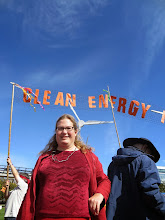"I'm here today with local community officials, representatives of great solar companies like Northern Reliability and SunCommon, and others committed to growing our economy, creating jobs and protecting the environment through renewable energy projects," the Governor said. "We have more than quadrupled the amount of solar energy in Vermont since I became Governor, and I am very pleased to be able to announce Clean Energy Development Fund solar grants to keep our momentum going."
As part of his Summer Solar Tour, Governor Peter Shumlin today visited Northern Reliability in Waitsfield, one of the many solar businesses that has helped Vermont earn the Number 1 national ranking for solar jobs per capita, to announce $442,750 in Clean Energy Development Fund grants for nine community solar projects. Overall these grants will support the installation of more than 500 kilowatts of solar for schools, towns, and communities in Vermont. This includes $80,000 for the Town of Waitsfield to install a 102 kilowatt solar project on the town garage to power Waitsfield's municipal buildings.
http://suncommon.com/vermont-business-magazine-shumlin-announces-clean-energy-grants-for-nine-community-solar-projects/Sent from my iPhone

